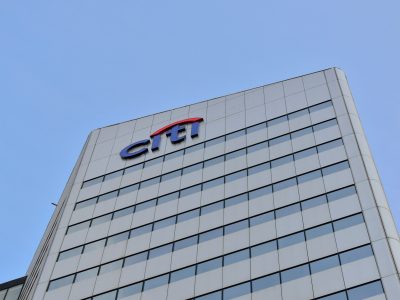
As the new Trump administration signals a potential shift toward more market-friendly economic policies, the landscape for digital finance and blockchain innovation is pivotal.
With a renewed focus on fostering technological development and redefining regulatory frameworks, the United States may be positioning itself as a global leader in the digital economy.
The potential appointments of Howard Lutnick and Scott Bessent to key economic roles bring expertise in financial markets and innovation, offering a chance to bridge traditional finance and emerging digital technologies.
Louis Bellet, Co-Founder and CEO of Yellow Network, shares his perspective exclusively with Invezz on how these leadership changes could influence blockchain innovation and regulatory clarity in the US.
Bellet explores the implications of new regulatory approaches, the opportunities and challenges for institutional investors, and the critical reforms needed to unlock the transformative potential of digital assets.
Drawing from his experience at Yellow Network, a pioneer in bridging traditional finance with blockchain technology, he sheds light on the evolving dynamics of the global financial system.
Invezz: With Howard Lutnick potentially joining as Commerce Secretary and Scott Bessent as Treasury Secretary, how might their backgrounds in finance and technology influence the broader economic strategies for digital assets and blockchain innovation in the US?
Having both Howard Lutnick and Scott Bessent in key economic positions could catalyse important progress for digital assets and blockchain technology in the US.
Both bring a deep understanding of financial markets and innovation – Lutnick through his work modernising bond trading at Cantor Fitzgerald and recent focus on crypto initiatives; Bessent with his extensive experience in global macro investing and market structure.
Their combined influence could help shape regulatory frameworks that encourage innovation while maintaining appropriate oversight.
The pair of appointments have the potential to accelerate the development of institutional-grade infrastructure for digital assets.
At Yellow Network, we’re already working to bridge traditional finance and crypto through our state channel technology and clearing protocol, so having cabinet officials who understand both the transformative potential and practical challenges of blockchain technology could help create an environment where projects like ours can flourish while ensuring consumer protection.
The key will be striking the right balance between innovation and stability – something both nominees have demonstrated they understand through their careers in traditional finance.
Invezz: The departure of Gary Gensler at the SEC suggests a significant shift in regulatory approach. How do you anticipate this change could impact the delicate balance between crypto market innovation and necessary investor protections?
The transition at the SEC marks an important inflection point for crypto regulation.
While Gary Gensler’s tenure was characterised by assertive enforcement actions and a broad interpretation of securities laws as they apply to digital assets, any significant regulatory shift needs to be viewed through the lens of sustainable industry development.
The core challenge has always been balancing innovation with investor protection, and I expect the new leadership will need to address this fundamental tension, albeit potentially with a different approach.
From my perspective leading a protocol focused on institutional trading infrastructure, the most constructive path forward would be maintaining strong investor protections while providing clearer regulatory guidance – particularly around which digital assets qualify as securities and what compliance frameworks should look like for decentralised trading systems.
The industry has matured significantly in recent years and many projects including ours are ready to work within well-defined regulatory parameters.
While we may see a more accommodating regulatory stance, I believe the focus should remain on developing frameworks that enable compliant innovation rather than stepping back oversight entirely.
The key will be finding the right balance that protects market participants while allowing transformative blockchain technologies to develop.
Invezz: Given the proposed leadership changes and a more pro-crypto political stance of Donald Trump, what are the most critical policy reforms you believe are necessary to position the US as a global leader in digital asset regulation and technological development?
The fundamental policy reform needed is a shift from reactive enforcement to proactive framework development.
We need clear, comprehensive guidelines that define the classification of digital assets, establish standards for cross-chain infrastructure and create predictable paths to compliance.
While maintaining strong investor protections, these frameworks should recognise the unique characteristics of blockchain technology and avoid simply forcing new innovations into outdated regulatory categories.
Equally important is establishing coordinated oversight between regulatory bodies.
The current fragmentation between the SEC, CFTC, Treasury and state regulators creates unnecessary complexity that impedes innovation.
By harmonising regulatory approaches and creating specialised digital asset divisions within key agencies, we can build a regulatory environment that both protects market participants and allows the US to lead in technological advancement.
In short, we need to create appropriate frameworks that match the technology’s potential.
Invezz: The incoming Trump administration appears to be signaling a more market-friendly approach to cryptocurrencies. From an international economic perspective, how might this shift alter the global competitive landscape for digital financial technologies?
The potential shift in US cryptocurrency policy could significantly rebalance the global digital finance landscape.
While regions like Singapore, the United Arab Emirates and the European Union have developed clear regulatory frameworks that have attracted digital asset businesses, a more accommodating US approach could rapidly shift the centre of gravity for innovation and capital formation back to American markets.
This is particularly significant given the US dollar’s role in the global financial system and America’s deep capital markets.
However, this shift could also accelerate the development of competing financial centres as other jurisdictions respond to maintain their competitive positions.
We’re likely to see increased competition in areas like cross-border payment systems, digital asset trading infrastructure and centralised finance integration.
What’s crucial is that this doesn’t become a race to the bottom in terms of oversight – rather, it should drive the development of sophisticated frameworks that balance innovation with appropriate safeguards.
Invezz: What are the most significant challenges and opportunities you see for institutional investors and traditional financial systems in adapting to an evolving regulatory environment?
The primary challenge for institutional investors lies in developing robust frameworks for digital asset integration while maintaining compliance with evolving regulations.
Traditional financial institutions must navigate the technical complexities of blockchain infrastructure, establish appropriate custody solutions and implement risk management systems specifically designed for digital assets – all while operating within regulatory uncertainty.
This requires significant investment in technology and expertise, along with the flexibility to adapt as regulatory frameworks crystallise.
The opportunities, however, are substantial. We’re seeing increased demand for sophisticated trading and settlement solutions that bridge traditional and digital finance.
Institutions that successfully develop these capabilities will be well-positioned to capture new revenue streams, particularly in areas like cross-chain liquidity provision and institutional-grade custody services.
The key advantage for established institutions is their existing risk management expertise and compliance infrastructure, which can be adapted to meet the unique challenges of digital assets.
The post Interview: Lutnick and Bessent could catalyse progress for digital assets, says Louis Bellet of Yellow Network appeared first on Invezz









